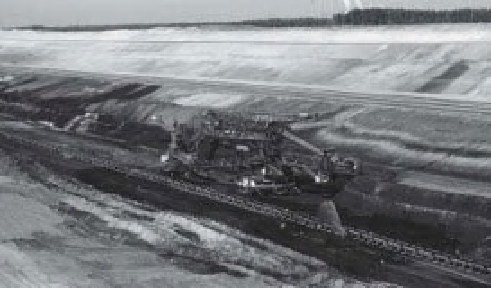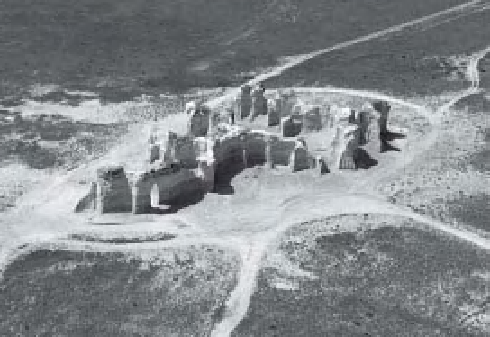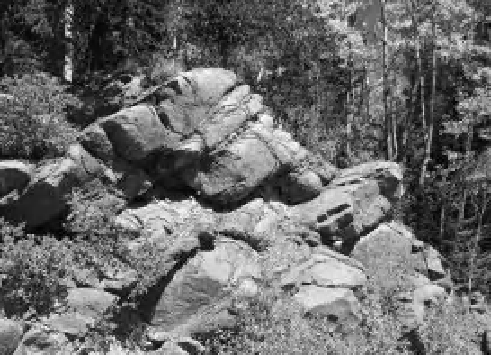Geoscience Reference
In-Depth Information
A
B
Figure 8-25.
Rounded edges in this bedrock outcrop
result from rapid weathering under a spruce-aspen
forest. Such weathering releases cations that are
delivered to the ocean. Photo by J.S. Aber at Cordova
Pass, south-central Colorado, United States.
in the carbon cycle both as carbon sinks and
sources of CO
2
and CH
4
. “Climate change will
likely affect the ability of wetlands to sequester
carbon, but the results will vary and are difi cult
to predict” (Kusler 1999).
Figure 8-24.
Buried carbon derived from biological
activity. A. Huge coal strip mine in eastern Germany.
Miocene age brown coal (lignite) is mined here for
power production nearby. Photo by J.S. Aber. B. Chalk
monuments in western Kansas, United States. Chalk is
composed of microscopic coccoliths (produced by
marine algae), which were deposited in great
abundance worldwide during the late Cretaceous. Kite
airphoto by S.W. Aber and J.S. Aber.
8.4.2 Climate and wetlands
Climate change has both regional and global
implications for wetlands. Mires that are expand-
ing, vertically or horizontally, accumulate carbon
in the peat and muck mass. Likewise, healthy
coral reefs that are growing upward or outward
sequester carbonate in their hard structure. On
the other hand, factors that may reduce water
supplies, alter nutrients or temperature, and
negatively inl uence hydrophytic plants and
aquatic animals could lead to shrinkage of
wetland environments and the release of green-
house gases. In a general way, warmer and drier
climate would reduce fresh-water wetlands,
while a cooler, wetter climate would favor
wetland expansion.
One could imagine a simple relationship in
which cooler, wetter climate leads to expansion
of wetlands, burial of organic carbon, and draw-
down of atmospheric greenhouse gases. In turn,
this would result in still cooler climate and
further growth of wetlands, which would amplify
northern hemisphere wetlands (Korholaa et al.
2010). Carbon is added to the atmosphere by
organic weathering of soil minerals and removed
by burial of excess organic carbon and carbon-
ate (Fig. 8-24).
The amount of CO
2
present in the atmos-
phere is linked to the amount of CO
2
dissolved
in sea water. The ocean is the major reservoir
for CO
2
at the Earth's surface, and CO
2
exchanges
freely between ocean and atmosphere. The CO
2
content of sea water is determined, in turn,
by buffering cations such as K
+
, Ca
2
+
and Mg
2
+
derived from weathering of rocks on land (Fig.
8-25) and by the rate of burial of organic carbon
as carbonate and hydrocarbon-rich sediment.
Fresh-water and marine wetlands play key roles







